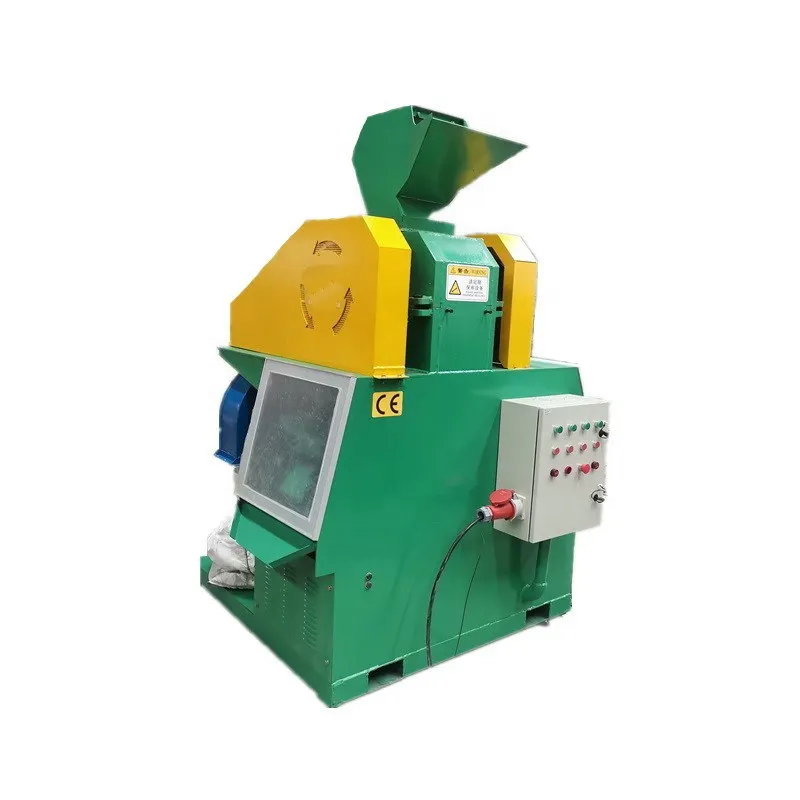Navigating the Journey of Establishing a Profitable Metal Recycling Plant

Understanding the intricacies of setting up a metal recycling plant is crucial for ensuring both initial success and sustainable profitability. As a central element within the waste management and sustainable practices industry, metal recycling plays an essential role in resource optimization and environmental preservation. Whether you are a budding entrepreneur or a seasoned professional, understanding the financial aspects involved is imperative.
The financial blueprint for a metal recycling plant can be complex, largely influenced by location, capacity, materials processed, technology employed, and regulatory requirements. Initial cost considerations span from land acquisition, facility construction, machinery procurement, staffing, and compliance with environmental regulations to ongoing operational expenses. Total investment can range substantially, typically starting from several hundred thousand dollars, potentially reaching into the millions, depending on scale and sophistication.

Site selection is foundational and substantially influences cost structures. An optimal location balances proximity to suppliers and clients with cost-effective logistics. Access to robust infrastructure, like transportation and utilities, enhances operational efficiency, reduces transit-related expenses, and can prevent costly production bottlenecks. Furthermore, regulatory compliance costs can vary greatly depending on regional and local environmental laws, often necessitating investment in specialized infrastructure to meet stringent standards.
Machinery and technology represent another significant investment. The equipment must align with the type of metals processed, be it ferrous or non-ferrous, each requiring specific technologies for sorting, shredding, and smelting. Advanced technologies incorporating automation and AI-driven sorting can significantly increase initial outlays but may prove cost-effective in the long run by enhancing efficiency, quality, and throughput, reducing labor costs, and minimizing material wastage.
Labor costs are integral, encompassing hiring skilled technicians and operators experienced in handling sophisticated machinery. Training programs ensure compliance with safety standards and operational efficiency, fostering a competent workforce that minimizes downtime and maximizes equipment lifespan. A focus on safety not only mitigates potential legal liabilities but also positions the company as a responsible and attractive employer.
metal recycling plant cost
Environmental considerations are paramount, influencing long-term viability and community acceptance. Sustainable practices not only align with regulatory demands but also appeal to environmentally conscious consumers and investors. Innovations in pollution control, waste management, and energy optimization can reduce ecological footprints and, with strategic marketing, enhance brand value, opening avenues for potential subsidies and financial incentives from governments striving to promote eco-friendly initiatives.
Building reputation and industrial credibility demands sustained commitment to best practices and industry standards. Accreditation from recognized industry bodies reinforces authority and trustworthiness in the market, assisting in forging partnerships, securing contracts, and establishing faith among stakeholders. Engaging in continuous improvement programs underlines expertise and dedication to operating at the industry's cutting edge.
Networking with industry veterans, attending trade expos, and partaking in industry webinars enhances knowledge, expertise, and market insights. Such interactions not only facilitate the adoption of best practices but also provide platforms for exploring collaborative opportunities, driving innovation, and sharing experiences about overcoming common operational challenges.
Resource efficiency is pivotal. Implementing a comprehensive recycling program that minimizes waste and maximizes resource recovery can boost profitability and appeal to stakeholders. Leveraging circular economy strategies enhances resilience to fluctuations in raw material prices and fosters mutually beneficial partnerships across the supply chain.
In conclusion, establishing a metal recycling plant is a multi-faceted venture necessitating meticulous planning and sustained investment in technology, personnel, and sustainable practices. Prioritizing operational efficiency, regulatory compliance, and community engagement yields substantial long-term dividends, ensuring the endeavor not only survives but thrives in an increasingly competitive and environmentally conscious market.


